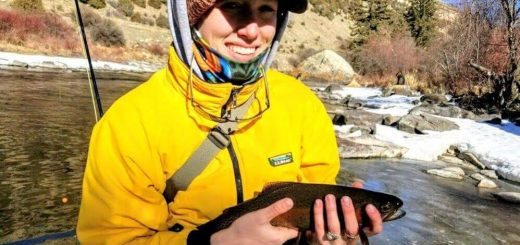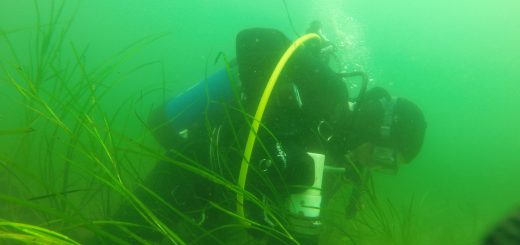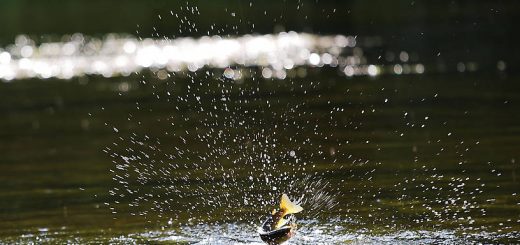Does maintenance of agricultural ditches impact fish that live there?
Drainage ditches at the edges of farm fields are a common sight. We drive along side these ditches and cross them as they travel through culverts under the road. Most of the ditches look grown in. Some even look dry. Occasionally we see them dug up, with shrubs and grasses cut down along the edges and mounds of dirt piled along one bank. A newly cleaned drain can be a dramatic sight.
We may wonder what this upheaval means for the plants and animals living in the ditches. Then again, we may think it’s no big deal. What would live in drainage ditches?
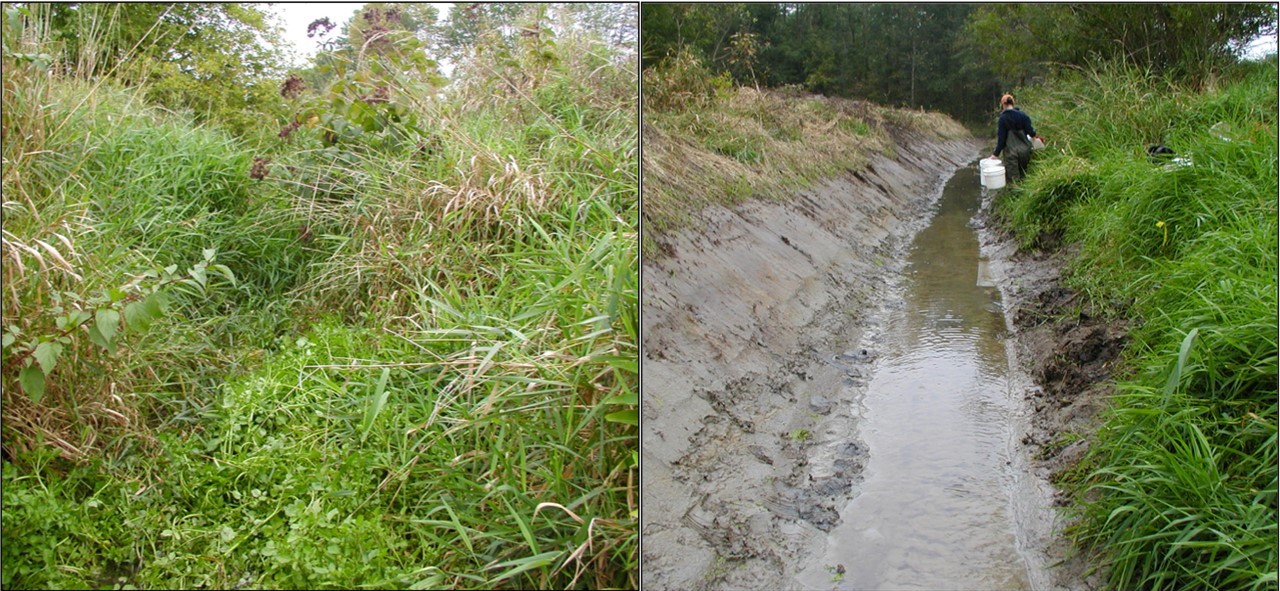
A drainage ditch before (left) and after (right) drain maintenance.
Such thoughts were at the heart of controversy between farmers, municipal drainage superintendents, and fish habitat managers. Cleaning drainage ditches is necessary to remove water from farmers’ fields. Flooded fields can mean crop damage or loss. From the farmers’ perspective, if the ditches are blocked by vegetation and sediment, they need to be cleared out. Little lives there anyway.
Fish habitat managers saw it differently. Many of these ditches were once natural streams – potential fish habitat. Destruction of fish habitat, including something as drastic as digging up entire continuous sections of it, required closer scrutiny.
Drainage superintendents were caught in the middle. As municipal employees, they are tasked with maintaining the agricultural function of the ditches. But, to clean the ditches, they also need the permission of fish habitat managers.
Some concrete information on how digging out the ditches – called drain maintenance – affected the plants and animals living there was needed. That is where we came in. Our study identified eight test ditches scheduled for maintenance. Each of these ditches was paired with another reference ditch that was not scheduled for maintenance. In each ditch, we measured the fish habitat, and the kinds and numbers of fish living in the ditch. These measurements were made from several months before to two years after the test ditches were maintained. This allowed us to tell if changes in the test ditches were due to the maintenance, or to other types of seasonal or environmental change.
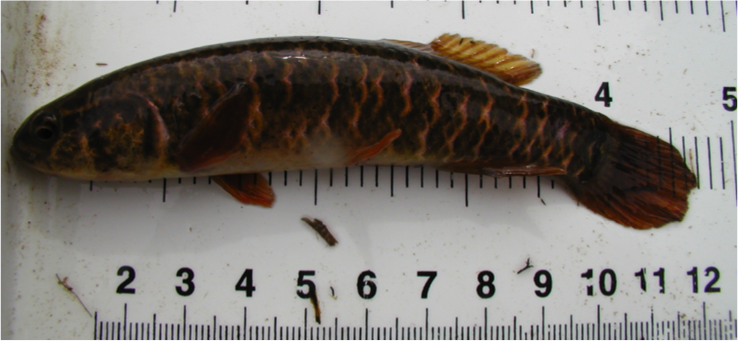
A mud minnow that was found in the drainage ditches. Photo credit: Belinda Ward.
We looked at two questions. How do the habitat features important to fishes, including insect food, change after a ditch is maintained? and How do the kinds and numbers of fish change after maintenance? We expected that drain maintenance would alter important habitat leading to fewer fish species and lower abundances.
What we discovered was unexpected. After the ditches were maintained, there were clear changes in habitat features important to fishes, such as the amounts of cover in the stream, on the banks, and overhead. These changes took two years to return to normal. There was no change in the kinds and numbers of aquatic insects in the stream. Even more surprising, there was also no change in the kinds and numbers of fish living in the ditches. It seems that concerns about drain maintenance harming fish may be more perceived than real. The maintenance dramatically alters habitat features visible to us, but the fish continue to use the maintained drains as they did before maintenance. It may be the fish are used to living in the ephemeral habitats that occur naturally in stream headwaters.
From a policy perspective, we hope our research will help with the development of cleaning practices that reconcile the need to clean drainage ditches with the need to protect fish biodiversity.
Authors:

Belinda Ward-Campbell is a recent PhD graduate from the Department of Integrative Biology at the University of Guelph. Her thesis focused on the effects of agricultural drain maintenance on fish habitat, benthic invertebrates and drain fish assemblages.

Nicholas Mandrak is an Associate Professor in the Department of Biological Sciences at the University of Toronto Scarborough. His lab conducts research on the biogeography, biodiversity, and conservation of freshwater fishes. @UTSConservation

Rob McLaughlin is an associate professor in the Department of Integrative Biology at the University of Guelph. He is also one of the Great Lakes Fishery Commission’s Partnership for Ecosystem Research and Management scientists. His research addresses the behaviour, ecology and management of fish.

